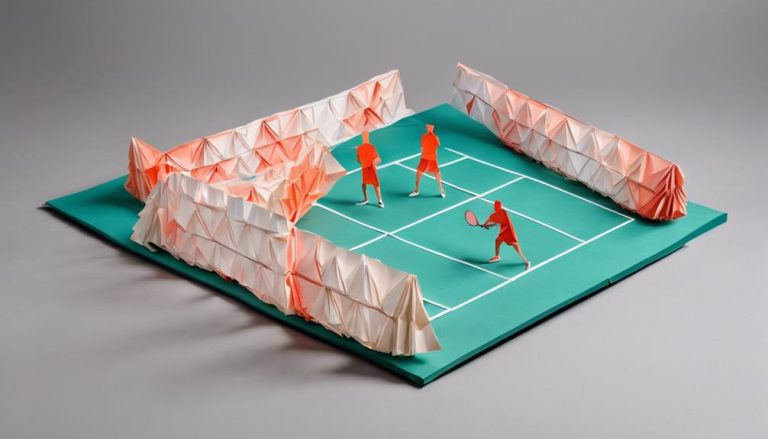General Rules of Wheelchair Racing
Wheelchair racing deserves more mainstream appreciation for its inspiring blend of endurance, technique, and inclusivity. Racers grind through distances at remarkable speeds, displaying incredible stamina, control, and determination. Understanding classes, equipment, course formats and skills provides a deeper respect for the mastery involved at elite levels. Spectators will gain exhilarating new experiences when they understand the basics of this adaptable sport.

This article covers fundamental wheelchair racing rules to showcase why it warrants more public enthusiasm. We’ll explain classification based on disability, standardized chair specifications, and formats from sprints to marathons. Distinct pushing techniques, racing lines, and strategic skills provide insight into mastery. Once informed on classes, courses, and abilities, the sheer fitness, focus, and competitive drive of these athletes shines through. Appreciation continues to grow for wheelchair racing as a captivating spectator sport. Let’s begin by looking at the wheelchair sport classes used in competitions.
Types of Wheelchairs Allowed
You can only race with certain types of wheelchairs. Racing wheelchairs must meet certain requirements in order to be allowed in a competition. Wheelchair specifications such as the wheel size, type of frame, and overall design have to comply with international standards. Rules also vary depending on the type of race, such as road or track events.
Most racing wheelchairs are constructed of lightweight aluminum frames and have two large wheels at the back for propulsion. The frame should be strong enough to carry the athlete’s weight and be able to withstand the bumps and shocks of the race. The size and type of the wheels on the wheelchair are also important. Generally, the larger the wheels, the faster the wheelchair will go.
The seating system must also match the athlete’s body size and shape. It should provide adequate support and ensure a comfortable and stable riding position. The seat should be adjustable for height, angle, and depth. The backrest should be adjustable as well, and the brakes must be in proper working condition.
Accessibility standards for wheelchair racing vary by country. It’s important for athletes to be aware of the rules and regulations in the country they’re competing in. Different organizations have different rules and regulations, so it’s important to research and double check what’s allowed in each competition.
Race Organization
You must adhere to the race organization’s regulations when competing in wheelchair racing. Qualifying times and weather conditions must be taken into consideration. The wheelchair racing organization must provide athletes with the necessary information regarding the race rules and regulations. Every wheelchair racing event must have a set of rules to ensure the safety and fairness of all participants.
The race organization must ensure that all participants have the necessary equipment and safety gear. All athletes must be provided with the same type of equipment and safety gear. All athletes must wear the correct clothing and safety gear for their particular event. The race organization must also ensure that the equipment is in good condition and that all safety procedures are followed.
The race organization must provide clear directions for the start and finish lines. The race course must be clearly marked and the race must be run on a straight line. The race organization must also provide information about the type of terrain and other environmental conditions that may affect the race.
The race organization must have a backup plan in case of inclement weather or other unforeseen events. The race organization must also ensure that all athletes are given the same opportunity to qualify for the race. Qualifying times must be clearly stated and all athletes must adhere to those times.
The race organization must also ensure that all athletes are treated fairly and that the race results are accurate. Any discrepancies must be addressed promptly and the race organization must take action as necessary.
Wheelchair racing is a competitive sport and the race organization must ensure that all athletes are given the opportunity to compete in a fair and safe environment. The race organization must provide athletes with all the necessary information about the race and the rules and regulations that must be followed. By following these guidelines, athletes can compete in wheelchair racing without fear of injury or unfairness.
Safety Precautions
Safety precautions must always be taken seriously when competing in wheelchair racing. Competitors should be aware of what’s expected of them when it comes to their wheelchair and their wellbeing. Here are some tips to keep in mind for a safe and successful race:
Qualifying Criteria:
- Make sure that you meet the required qualifying criteria to participate in wheelchair racing.
- If you aren’t sure if you meet the criteria, consult with the race organizers or your doctor.
- All athletes must be medically cleared to race.
Wheelchair Maintenance:
- Inspect your wheelchair for any potential problems or wear and tear before and after each race.
- Make sure that all the parts of your wheelchair are securely fastened and in good working condition.
- Follow the manufacturer’s instructions for the proper care and maintenance of your wheelchair.
Personal Safety:
- Wear a helmet and other safety gear when participating in wheelchair racing.
- Make sure to warm up and cool down properly before and after each race.
- Stay hydrated and take breaks as needed during a race.
Starting and Finishing Points
As you race, make sure to pay attention to the start and finish points. Wheelchair racing requires the athlete to be properly set up. The right setup and equipment is necessary for a smooth start, and is also critical for a safe and successful finish.
The starting gear includes the wheelchair, gloves, and helmet. All of these components must be in place before the race begins. The athlete’s wheelchair should be inspected to make sure it is in proper working condition and meets the safety standards. Gloves should be worn to protect the hands from blisters and to help the wheelchair roll more smoothly. A helmet is also mandatory to protect the athlete’s head in case of an accident.
It is also important to pay attention to the starting point of the race. The starting line must be clearly marked and all athletes must be aware of the starting procedure. When the race begins, the athletes must be lined up in the correct order and the starting whistle should be heard.
At the end of the race, the athletes must be aware of the finish line. All athletes must cross the finish line in order for the race to be completed. There are certain rules and regulations in place to ensure that everyone follows the proper protocol.
The following table outlines some of the wheelchair setup and starting gear that is needed for a successful race:
| Wheelchair Setup | Starting Gear |
|---|---|
| Wheelchair | Wheelchair |
| Wheels | Gloves |
| Brakes | Helmet |
| Seating Position |
Wheelchair racing is a great way to stay active and have fun. As long as you pay attention to the starting and finishing points, you can enjoy a safe and successful race.
Course Lengths
Racing in a wheelchair requires you to be mindful of the course lengths. Depending on the race, the course can range from as short as 100 meters to as long as a marathon. Therefore, it’s important to understand the rules and regulations governing course lengths.
When choosing a wheelchair for racing, you should consider the following:
- Wheelchair Selection:
- Shorter courses require a lightweight, ultra-aerodynamic wheelchair.
- Longer courses need a wheelchair that’s designed to provide ergonomic comfort and support.
- Competitive Strategies:
- Shorter courses should be approached with a sprint-style strategy, while longer courses should be approached with a more consistent pacing strategy.
- When competing in long-distance races, it’s important to pay attention to the terrain and to plan accordingly.
- Course Regulations:
- Each race will have its own set of rules regarding the course length, the number of laps, and the types of wheelchairs permitted.
- It’s important to familiarize yourself with these rules and regulations before the race.
No matter the length of the course, it’s important to be aware of the race regulations and to plan your strategy accordingly. With the right knowledge and preparation, wheelchair racing can be both an enjoyable and rewarding experience.
Rules for Passing
Understand the rules of passing when racing in a wheelchair. Wheelchair racing is a thrilling sport, and one that requires a well-thought-out strategy. When racing, it is important to be aware of the rules for passing. The rules for passing in wheelchair racing can be broken down into four main categories: track etiquette, wheelchairs, race etiquette, and rules of the track.
| Track Etiquette | Wheelchair Etiquette |
|---|---|
| Stay in your lane | Avoid contact with other chairs |
| Maintain your speed | Maintain momentum |
| Keep a safe distance | Keep your chair steady |
| Stay in control | Don’t move your chair abruptly |
When racing in a wheelchair, it is important to adhere to track etiquette. This includes staying in your own lane, maintaining your speed, and keeping a safe distance from other racers. Additionally, wheelchair etiquette should be followed. Racers should avoid contact with other chairs, maintain momentum, keep their chairs steady, and not move their chairs abruptly.
Race etiquette is also important to follow while racing in a wheelchair. Racers must be respectful of their competitors and maintain a positive attitude during the race. Furthermore, they should not obstruct the track or impede other racers.
Finally, it is important to familiarize yourself with the rules of the track. This includes understanding any additional regulations or rules that have been established by the race organizers, as well as any safety regulations.
Awards and Prizes
You can earn awards and prizes for a successful wheelchair race. Depending on your performance, these awards may include financial support, equipment sponsorship, and media coverage. Here is a breakdown of the different awards and prizes you can expect to receive when competing in a wheelchair race:
- Financial Support:
- Cash prizes
- Travel grants
- Equipment grants
- Equipment Sponsorship:
- Wheelchairs
- Accessories
- Protective gear
- Media Coverage:
- News articles
- Television interviews
- Magazine features
Financial support usually comes in the form of cash prizes, travel grants, and/or equipment grants, which can be used to further your career in wheelchair racing.
Equipment sponsorship may include a wheelchair, protective gear, and accessories, such as gloves and helmets.
Finally, media coverage can be a great way to raise awareness of the sport and increase your own profile. This can take the form of news articles, television interviews, and magazine features.
No matter the award or prize, taking part in wheelchair racing is a great way to challenge yourself and push your limits. With the right mindset and dedication, you can become an elite wheelchair racer and receive the recognition that comes with it.
Frequently Asked Questions
Is There an Age Limit for Wheelchair Racers?
Yes, there’s an age limit for wheelchair racers. Generally, racers must be 18 years or older to compete in wheelchair races and win prize money. The age requirement is in place to protect the safety of all racers.
Additionally, racers must follow safety guidelines set by the governing body of wheelchair racing for their own safety and the safety of other racers. All racers must abide by the rules and regulations of the sport to be eligible for prize money.
Are Spectators Allowed to Attend the Race?
Yes, spectators are allowed to attend wheelchair races! However, it’s important to keep safety regulations and wheelchair maintenance in mind.
All spectators must maintain a safe distance from the racers and their equipment, and mustn’t interfere with the race in any way. Furthermore, it’s essential that spectators bring their own chair or a wheelchair to view the race, as they’ll be expected to follow the same rules and regulations as the racers.
Does the Race Have Any Sponsors?
Yes, wheelchair racing often has sponsors. Depending on the race, there may be a few or many sponsors. Each sponsor may have different sponsorship requirements and prize money.
Generally, sponsors provide funds to help cover the cost of the race. They may also offer a prize to the winner of the race, which could be in the form of cash, goods, or services.
All sponsors should be acknowledged during the race and have their logo displayed on banners or other materials.
Are There Any Additional Fees or Costs Associated With Participating in the Race?
Yes, there are additional fees associated with participating in a wheelchair race. Safety equipment, such as helmets and other protective gear, may be required for certain events.
You may also be responsible for your own travel costs, including airfare, lodging, and food. Depending on the race, you may also have to pay an entry fee.
Be sure to read all of the details before signing up for a race to ensure you know what’s expected of you.
What Is the Weather Like on Race Day?
The weather on race day is something to keep in mind when preparing for the race. Depending on the season, you should dress appropriately for the weather, so make sure to check the forecast before the race.
You may need to bring extra layers of clothing, such as a light jacket or a raincoat, in case it’s cold or raining. Additionally, you should consider the terrain of the race course and the conditions of the day, as they can affect your clothing requirements.
In general, it’s important to be prepared for any kind of weather when participating in a wheelchair race.
Wheelchair racing is an exciting and rewarding sport that requires both skill and dedication.
With the right equipment, organization, safety measures and rules, anyone can enjoy the thrill of competition.
Whether you’re a seasoned veteran or a newcomer to the sport, it’s sure to be a rewarding experience.
As the saying goes, ‘It’s not the destination, but the journey that counts.’
So, strap in and enjoy the ride!






